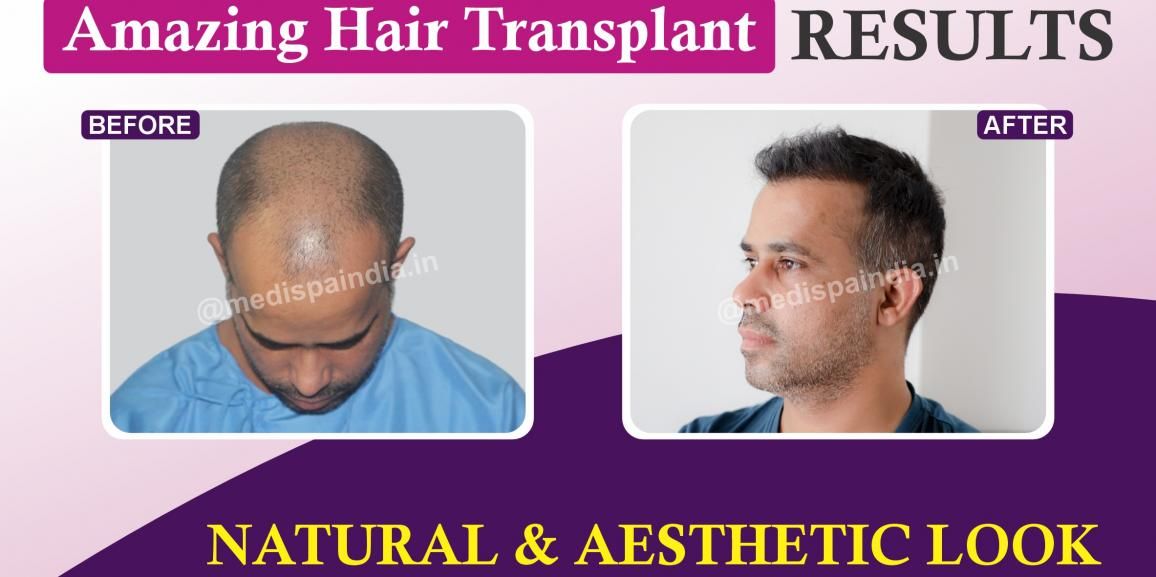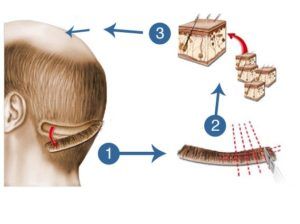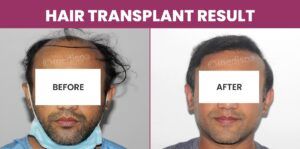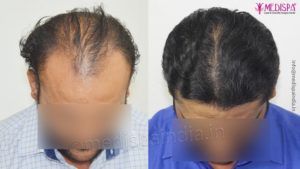
If you select the best surgeon and properly adhere to the hair transplant aftercare guidelines, hair transplant failure is uncommon. A knowledgeable hair transplant surgeon will unquestionably go over and evaluate every scenario that could result in a failed hair transplant, take action to correct it, or advise against it.
Damage to the hair follicles or improper selection of the hair follicles during the procedure is the most common reason for hair transplant failure. Yes, you guessed it right; this may only occur if the surgeon you select for the procedure is unskilled and unqualified.
A talented hair transplant surgeon works in tandem with a group of talented technicians who produce excellent results rapidly for the surgeon while preventing harm to the hair follicles through correct handling.
To ensure the success of the treatment, Dr. Suneet Soni of Medispa Hair Transplant Clinic pays great attention to every detail. Prior to surgery, a thorough examination is conducted to ascertain the patient’s needs as well as the pattern and reason of the patient’s hair loss. If you are not a good candidate, a respectable and experienced hair transplant surgeon is unlikely to recommend that you have the procedure. As a proponent of open communication, Dr. Suneet Soni explains what can be expected during surgery so that the patient is better informed and able to make an educated choice. The hair transplant cost in India is definitely very affordable so you should go for the best option.
HOW CAN YOU PROVE THAT A HAIR TRANSPLANT FAILED?
The term “failed hair transplant” refers to a hair transplant that has failed, therefore let’s look at some potential problems with hair transplants. The following explanations provide examples of the many results presented that constitute a failed hair transplant:
- A wig-like or doll-head appearance: A doll’s head appearance or wig-like appearance results from improperly aligned and angulated hair grafts, which creates an unattractive hairline.
- Unattractive scars: Using either of the hair transplant techniques—FUT or FUE—the improved and inventive approach has become the procedure capable of producing a hair transplant with nearly imperceptible scarring. However, if the treatment is carried out by inexperienced hands, it may leave unsightly scarring, which is unquestionably a symptom of a failed hair transplant.
- Unnaturally looking hairline: High density hair transplants are required for cosmetic procedures like hair transplants in order to produce natural-looking outcomes. A surgeon must have exceptional artistic talent to create a hairline that looks completely natural in order to accomplish the hair transplant process flawlessly. If the hair transplant surgeon is unable of creating a natural-looking hairline, you will experience terrible results and an artificial appearance, which is referred to as a failed hair transplant.
- Density depletion at donor area: When an untrained surgeon overharvests the donor area due to ignorance, less hair grafts survive at the bald area, density depletion at the donor area, and unintended damage to priceless hair grafts result.
- Weak hair growth at the bald location: If the hair grafts are not taken from the safe zones or are damaged during the hair transplant procedure, there are reasonable chances that they won’t survive at the bald place and would die, which would result in weak hair growth there. A failed hair transplant is indicated by the patchy hair growth.
Nobody wants to experience the suffering and sorrow of a botched hair transplant, but in order to prevent that, you must be wise and careful when selecting the hair transplant surgeon and the clinic. Always put your trust in highly experienced, well-regarded hair transplant specialists who are well-known for their expertise.
Why is repairing a hair transplant a smart idea?
If the failed hair transplant leaves you disappointed, you have two choices. You can either live with it or, if at all feasible, have it fixed. In addition to being feasible, hair transplant repair is a terrific concept to improve the subpar results from the initial session of hair transplant. Although the surgery may cost a little more, it is worthwhile, and there is still a chance you will have the outcomes you were hoping for.
But you should be informed that hair transplant repair is a highly precise process, capable of being completed only by a skilled and experienced surgeon. Therefore, be certain that you selected the best surgeon this time.
How is the repair of a hair transplant done?
You might be asking now what the surgeon does during a hair transplant repair or how the process fixes a previously attempted but unsuccessful hair transplant. Here are a few methods for fixing a hair transplant that went wrong.
- Scalp micropigmentation: Also known as a hair tattoo, scalp micropigmentation is a surgery that is used to cover scars from prior hair transplants that are disturbing you due to their anesthetic appearance. In this technique, the damaged area is tattooed with a premium pigment to create the appearance of new hair growth.
- Removal of the hair follicles that have already been implanted: In this approach, the hair follicles that have already been implanted are removed and then transplanted once more in accordance with the hairline designing, resulting in a more natural and attractive appearance this time.
- Hiding the artificial-looking hairline behind a newer one by harvesting more hair follicles from the donor location: In this approach, the previously created unnatural hairline is covered behind a new hairline drawn in front.





